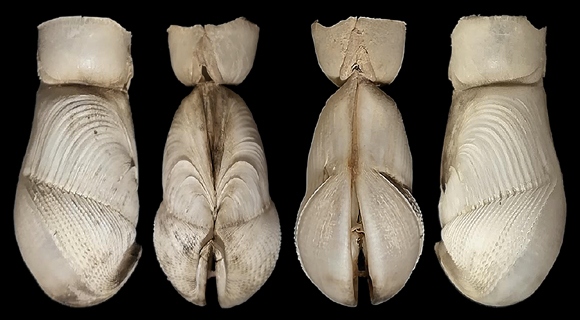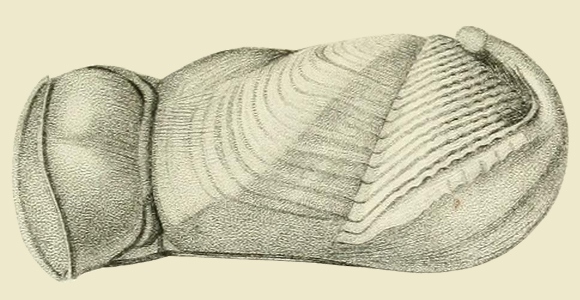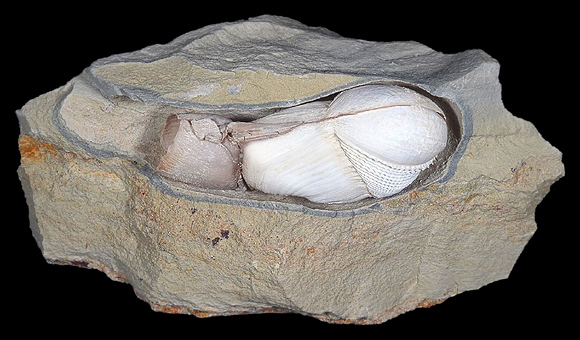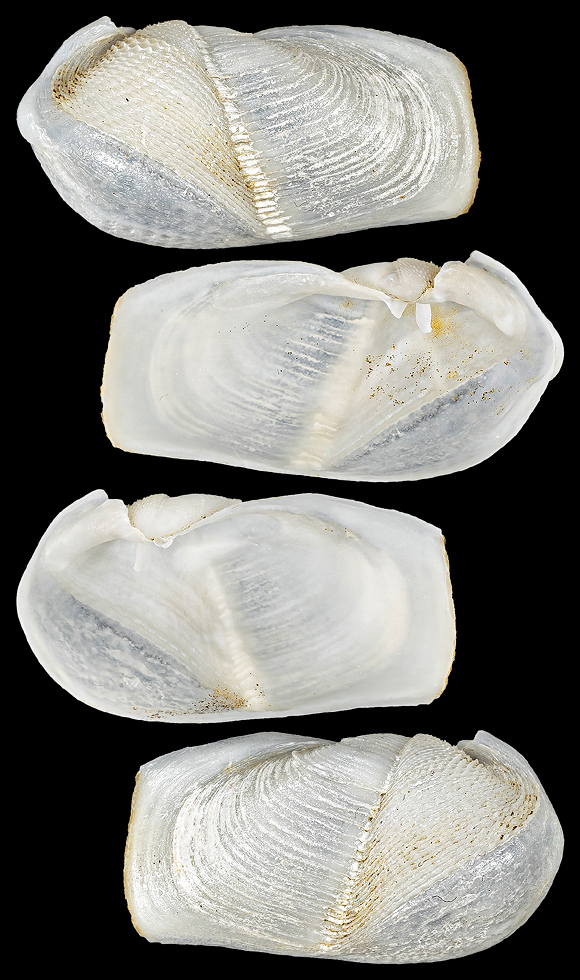
« At the close of this tribe we will take occasion briefly to record a very singular testaceous production, some time since found on the strand near Exmouth, by Mr. C. W. Loscombe, and now in the cabinet of the Rev. Dr. Goodall, provost of Eton College. It is of a ferruginous or rusty-brown color, extremely thin and fragile, in shape resembling the Pholas Candida, closed at the larger extremity, and gaping at the other, where it is invested with a distinct circular appendage, completely inclosing the smaller extremity, and extending like a broad open ring beyond it. This supplemental ring appears to stand in the place of the dorsal valves which are wanting. It has not the prickly ridges at the larger end; but the back is rather flattened and strongly wrinkled, like that of the Pholas Dactylus. » – W. Turton: A Conchological Dictionary of the British Islands, London 1819, p.147.
10m deep, Omiš area, Split-Dalmatia Comitat, S. Croatia. 42mm. Original pictures provided by N. Lete (HR).
– (CC BY-NC-SA) –

« The internal conformation it was impossible to examine without the destruction of this curious and unique specimen; but from its general appearance it may be reasonably supposed to possess the hinge and the teeth of a Pholas. A beautiful plate of this most rare and unknown production has been engraved for Mr. Loscombe, by Mr. Sowerby; and in the present uncertainty as to its generic appropriation, its fortunate possessor denominates it P. Loscombiana. » – Ibid.
The specimen in its block of limestone. Original picture provided by N. Lete (HR) – (CC BY-NC-SA).

Above, the species in W. E. Leach: Molluscorum Britanniae Synopsis, London 1852, plate XI.


– (CC BY-NC-SA) –

Above: Pholadidea esmeraldensis (Olsson, 1961) from the Ecuador. 18mm.